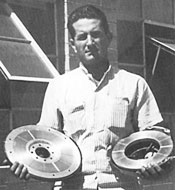SEMA Seeks Nominations for Hall of Fame
At SEMA headquarters in Diamond Bar, California, pen-and-ink portraits line second-floor halls, the sketches honoring the entrepreneur enthusiasts who have played crucial roles in the success of both the association and the industry it serves. They are the leaders, innovators and creators, the enthusiasts who transformed small, burgeoning businesses into an industry worth more than $36 billion annually with 6,817 SEMA member companies. They comprise the SEMA Hall of Fame, and epitomize the essence of ingenuity in action.
Nominations are now being accepted for the SEMA Hall of Fame. Created in 1969, the SEMA Hall of Fame is the most prestigious award presented to an individual by the association. It is designed to honor outstanding persons in the industry who have enhanced the stature of, or significantly contributed to, the industry and/or association’s growth.
Nominations are being accepted until March 16, 2011, and can be submitted online by following this link.
To learn more about the SEMA Hall of Fame and for a list of inductees, visit www.semahof.com or contact Lisa Moreno at lisam@sema.org or 909/978-6684.
Read more about the SEMA Hall of Fame and the inductees enshrined in 2010 through the August 2010 issue of SEMA News. Last year’s SEMA Hall of Fame inductees—Richard “Dick” McMullen, Chuck Schwartz and Van Woodell—are all featured, and their stories reveal how doing what they love resulted in major contributions that have left indelible positive marks on the specialty-equipment industry.
THE FIRST INDUCTEE:
Paul Schiefer did what many men did after serving in the Navy during World War II: He resumed his hobby of working on cars. He began experimenting on his flathead Ford V8-powered “T” and eventually produced the first ribbed-type, lightweight, cast-aluminum flywheel that would not warp or distort under severe load. As horsepower increased, so too did the danger of flywheels exploding into dangerous shrapnel.
Schiefer developed a process that provided the ultimate in coefficient of friction and wear resistance, and went on to develop the first bonded-bronze clutch facing and a new aluminum flywheel called the “Albro.” During the 1960s, Schiefer guided his company to become the largest specialty drivetrain-component manufacturing company in the world.
Category: Other Industry News











